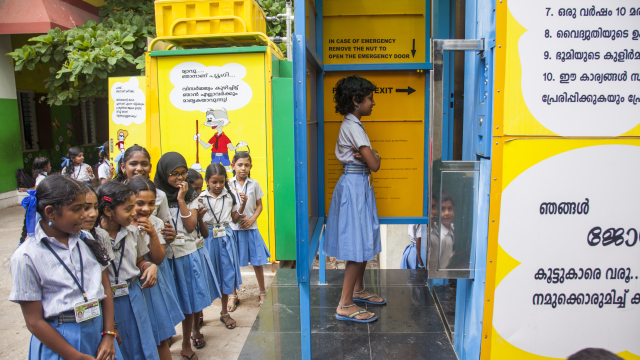The Challenge
The need for better sanitation in the developing world is clear. Forty percent of the world’s population—2.5 billion people—practice open defecation or lack adequate sanitation facilities, and the consequences can be devastating for human health as well as the environment. Even in urban areas, where household and communal toilets are more prevalent, 2.1 billion people use toilets connected to septic tanks that are not safely emptied or use other systems that discharge raw sewage into open drains or surface waters.
Poor sanitation contributes to about 700,000 child deaths from diarrhea each year. Chronic diarrhea can hinder child development by impeding the absorption of essential nutrients and reducing the effectiveness of life-saving vaccines.
Creating sanitation infrastructure and public services that work for everyone and that keep waste out of the environment is a major challenge. The toilets, sewers, and wastewater treatment systems used in the developed world require vast amounts of land, energy, and water, and they are expensive to build, maintain and operate. Existing alternatives that are less expensive are often unappealing because they don’t kill disease-causing pathogens, have impractical designs, or retain odors and attract insects.
The Opportunity
By improving how we deal with human waste, we can save lives, improve child health, and ensure greater dignity, privacy, and personal safety, particularly for women and girls. Better sanitation also contributes to economic development, delivering up to $5 in social and economic benefits for every $1 invested through increased productivity, reduced healthcare costs, and prevention of illness, disability, and early death.
Solving the sanitation challenge in the developing world will require radically new innovations that are deployable on a large scale. Innovation is especially needed in densely populated areas, where billions of people are only capturing and storing their waste, with no sustainable way to handle it once their on-site storage—such as a septic tank or latrine pit—fills up.
Groundbreaking improvements in toilet design, pit emptying, and sludge treatment, as well as new ways to reuse waste, can help governments and their partners meet the enormous challenge of providing quality public sanitation services.



















